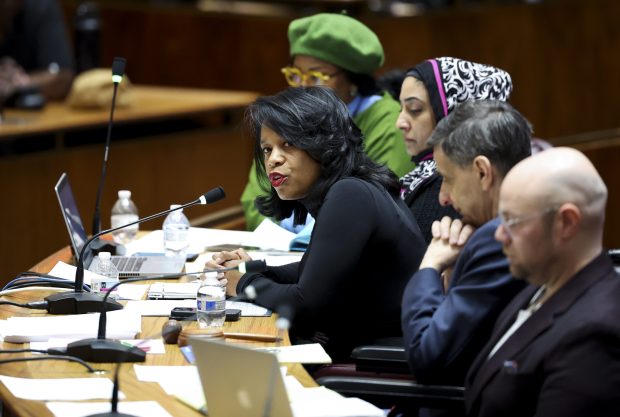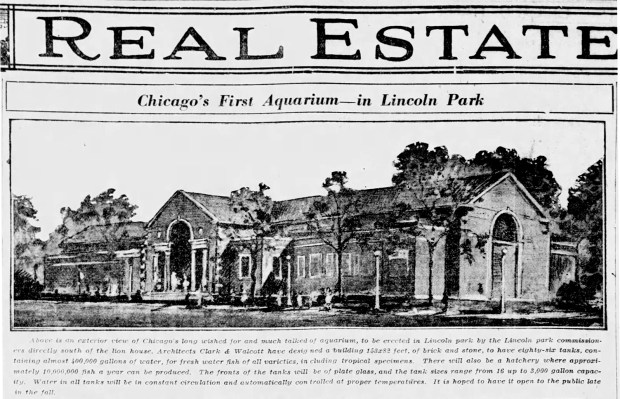Portage’s sewer bills are going to jump in January. The question for now is how much they’ll increase on Sept 1.
The City Council is considering a $31 million plan to address aging sewer infrastructure. The council plans to decide next Tuesday on the plan.
Getting the lowest interest rates means building up cash reserves to qualify for state revolving loan fund assistance.
Portage is one of six Indiana communities to qualify for an SRF loan in this round. On the original list of finalists were Fort Wayne, Crown Point, Peru’s Mississinewa Lake District, Gary Sanitary District, Elkhart and Peru. One of them dropped out, so Portage moved up from its position as No. 7 on the list, Sanitary Superintendent Tracie Marshall said.
Currently, Portage’s monthly residential sewer rate is $36.50. It is set to increase to $53 on Jan. 1, $56.40 in 2026 and $58.20 in 2027 under the recommendation presented by consultant Otto “Buzz” Krohn, executive partner with Krohn & Associates.
He also recommended setting the rate at $49 on Sept. 1, an increase of $12.50, but the council balked at the idea of such a large jump on short notice to customers.
Industrial and commercial customers will see similar percentage increases.
“This is the largest increase in the history of the city,” Porter County Council member and Portage resident Jeremy Rivas said. “This is a huge increase to come all at once.”
Resident Antonio Gutierrez said he’d prefer a bill based on usage rather than a flat fee. Krohn said the difference in cost for residents based on usage would be minimal.
“Everybody realizes our city needs the work bad,” Gutierrez said, but he doesn’t want a big rate increase just a couple of weeks away. “Now is not the time.”
Robert Dixon, a resident since 1958, said he worked for the Portage Utilities Department. “I think we should have our rates increased,” he said, to rebuild the infrastructure. “We had zero backups, which is a blessing and surprise, in 2008 when I worked on them,” he said.
Even with the rate increases, Portage’s bills will still be lower than the current rates in Chesterton, South Haven, Hobart and Valparaiso, Krohn said.
Mayor Austin Bonta explained the city’s street department trash pickup and sewer bills are combined into one monthly bill. The sanitation fee is for trash pickup and sanitary is for sewers. “It gets a little confusing, sanitation vs. sanitary,” he said,
“Lots of people make it clear that that they think they’re paying $70 for their trash bill,” he said. Actually, it breaks down now to $20 for trash, $13.50 for stormwater and $36.50 for sewer. “All of these together equals $70.”
Bonta said his goal is to keep city services more affordable than outsourcing them.
“We should not be charging a fee so high that it doesn’t make any sense,” he said. At the same time, if the sewer rate is too low, Portage could face a state moratorium on new construction or see the system break down.
“We need to get it to where we can keep it running and meeting our needs in the future,” he said.
Sewer rates in Indiana and the U.S. have risen for a variety of reasons, including federal environmental mandates requiring additional lab testing and additional training, said Tracie Marshall, the city’s sewage treatment plant superintendent.
In about five years, she said, treatment plants will have to filter out PFAS, popularly known as “forever chemicals.” That’s another big expense coming.
Portage’s treatment plant dates to 1972. This year, the city began replacing four of the six clarifiers. “They were 45 years old. The life of a clarifier is 25,” she said.
The city is also adding a solar array to reduce utility costs by about 40%. That’s being done with some of the $12.5 million the city borrowed last year but other equipment needs to be replaced as well.
The cost of pumps – the plant has 28 – has risen 50%, Marshall said. “Without them, if they fail, we would have to dump straight into Lake Michigan. That is something we never want to do.”
Chemical costs have nearly doubled. Supplies like filters and bags have gone up by 40%. The plant uses a 1989 dump truck.
“We’re operating with what we have, but you hold your breath on some days,” Marshall said.“What I don’t want is for a pipe to fail and the toilet to not flush in someone’s house,” she said.
Marshall extended an offer to the public to tour the plant to see what equipment the city is working with.
One of the city’s lift stations dates to 1962, said Dan Komenda, who oversees the city’s field forces department, which deals with sanitary and storm sewers and related infrastructure.
Four other lift stations are over 50 years old, and the list goes on.
“Everything fails at one time or another,” Komenda stressed.
Seven of the lift stations have confined space. “These are the most dangerous lift stations to work on,” he said. Workers have to use gas meters when working in the hole and a tripod is put in place to lower and lift workers, one at a time.
“If something does go wrong in a confined space, our fire department cannot go down in a confined space area,” Komenda said. “It’s a specialized training that our fire department does not have.”
Relining pipes is cheaper than replacing them. It also means not having to tear up roads. But the city has fallen behind on relining pipes. “We haven’t done CIPP (relining) for probably five years. I put it in my budget, but it was taken out,” he said.
The $31 million budget for sewer projects provided by Commonwealth Engineers includes pipe relining, a north interceptor, lift stations and treatment plant projects. An interceptor line is the main artery to the treatment plant.
The current sewer rate dates to 2016. “Fifty cents a year doesn’t cover the average cost of inflation,” Krohn said. “It’s helpful, but it’s not kept pace.”
Under state law, rates must be sufficient to cover the utility’s needs, he said.
In addition, food service businesses will see a $20 “FOG” fee for checking their grease traps for fat, oil and grease. Keeping those contaminants out of sewers helps prevent clogging and reduces the cost of wastewater treatment for everyone, Marshall explained.
Bonta stressed that even if there were no new homes built, there are still maintenance needs to address. He asked Krohn about a system development fee for new homes that will be taking advantage of existing infrastructure.
“Growth in your customer base creates economies of scale,” Krohn said. He suggested charging $2,500 to $3,000 for new homes.
“I’m very much a proponent of system development charges,” he said. “It doesn’t affect any existing ratepayer.”
Bonta said while that could go into effect with the new rates, he wants to make sure developers know about them well in advance so they can plan accordingly.
Doug Ross is a freelance reporter for the Post-Tribune.





